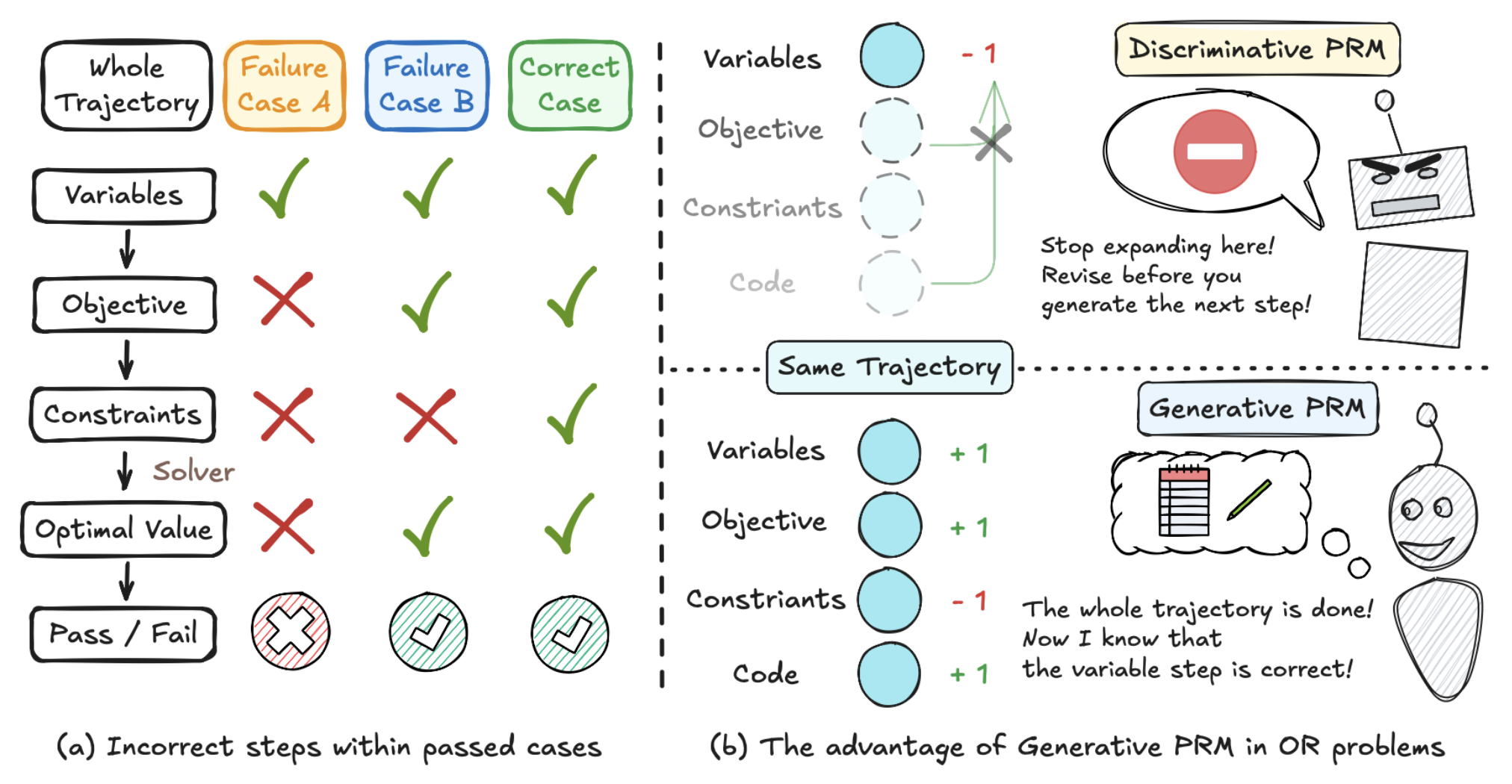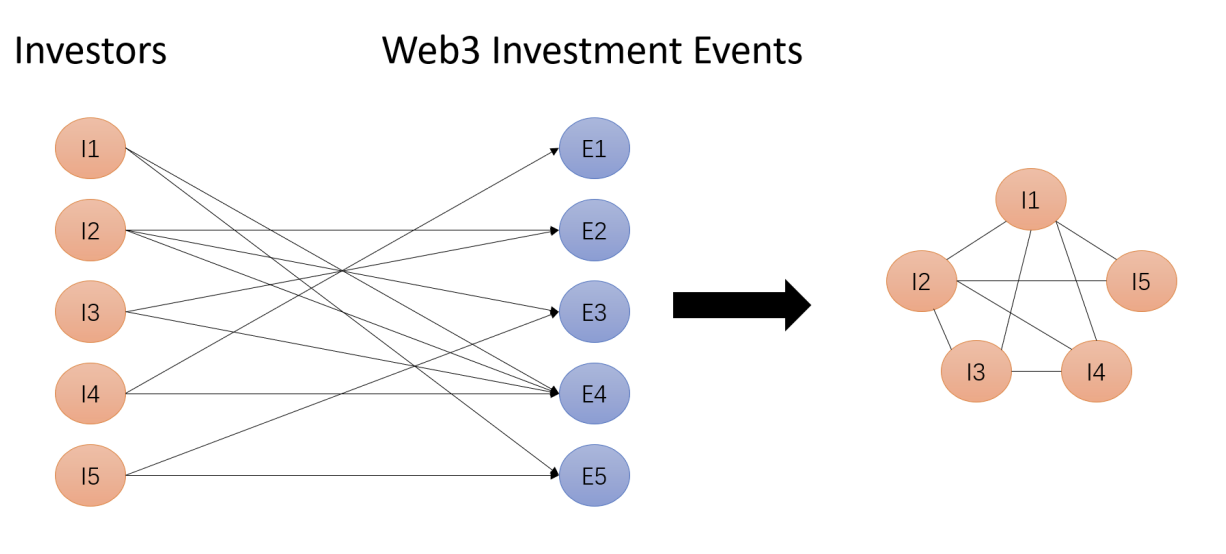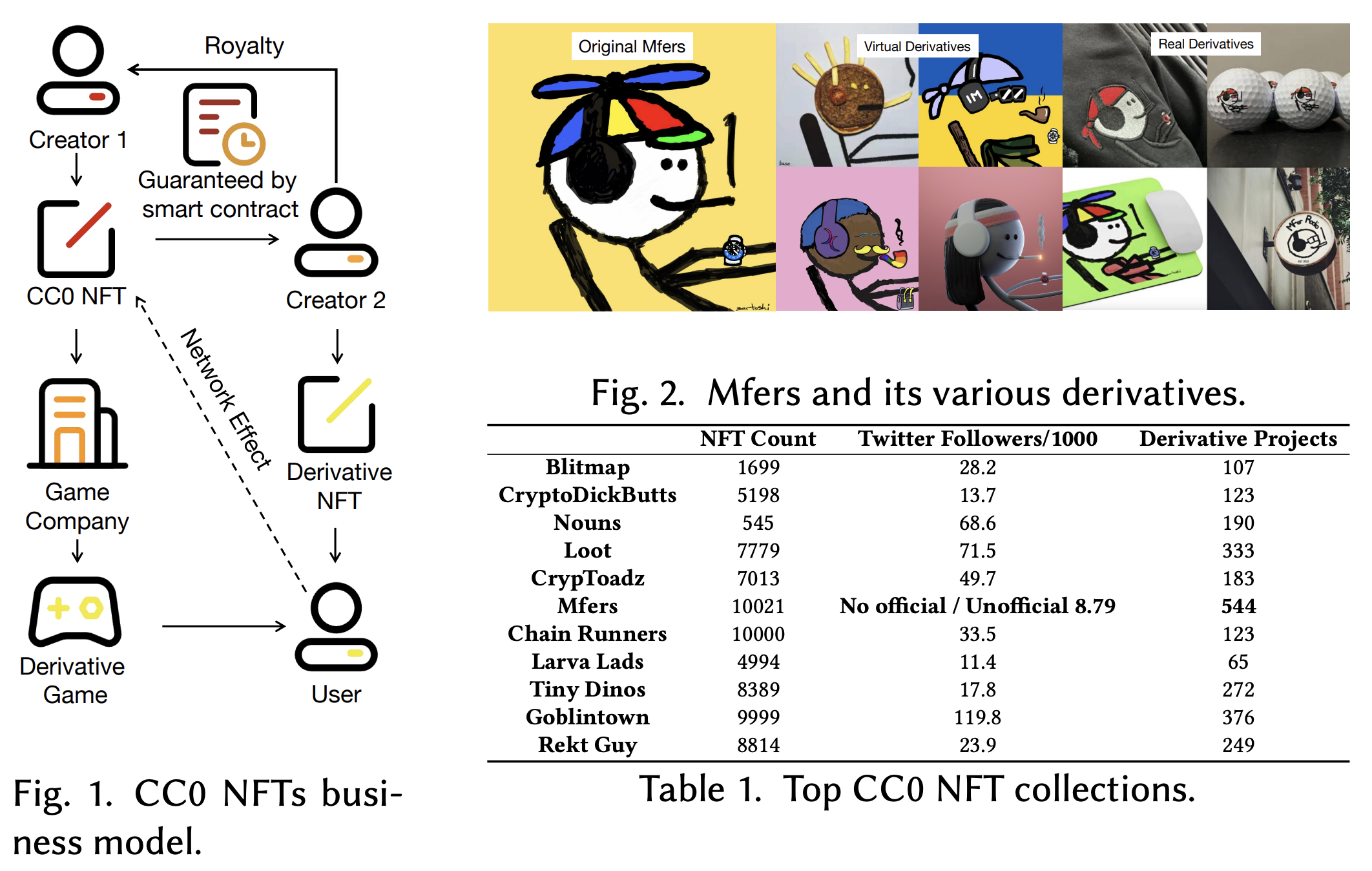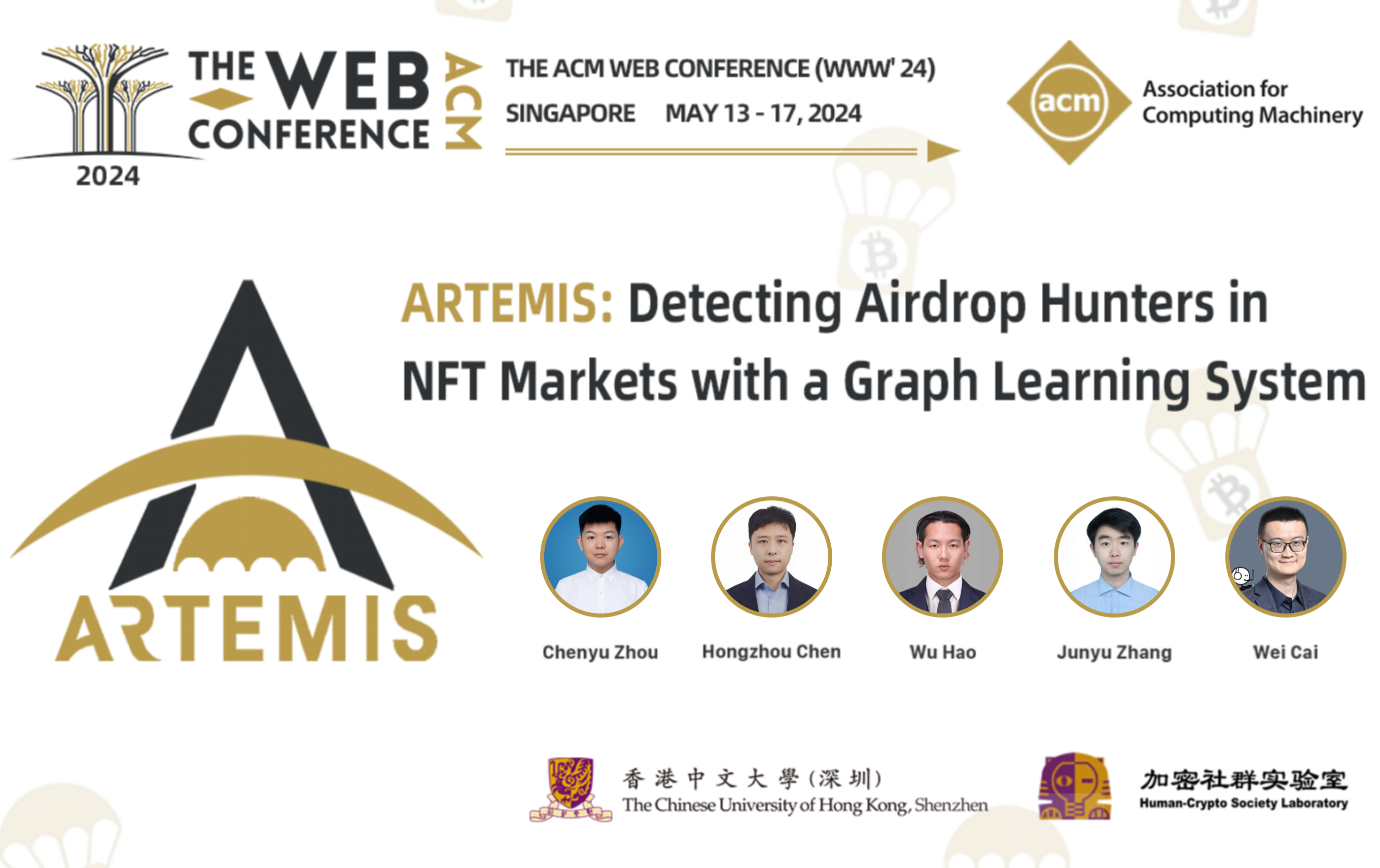publications
publications by categories in reversed chronological order.
2025
- Preprint
 StepORLM: A Self-Evolving Framework With Generative Process Supervision For Operations Research Language ModelsChenyu Zhou, Tianyi Xu, Jianghao Lin, and Dongdong GeArXiv Preprint, 2025
StepORLM: A Self-Evolving Framework With Generative Process Supervision For Operations Research Language ModelsChenyu Zhou, Tianyi Xu, Jianghao Lin, and Dongdong GeArXiv Preprint, 2025Large Language Models (LLMs) have shown promising capabilities for solving Operations Research (OR) problems. While reinforcement learning serves as a powerful paradigm for LLM training on OR problems, existing works generally face two key limitations. First, outcome reward suffers from the credit assignment problem, where correct final answers can reinforce flawed reasoning. Second, conventional discriminative process supervision is myopic, failing to evaluate the interdependent steps of OR modeling holistically. To this end, we introduce StepORLM, a novel self-evolving framework with generative process supervision. At its core, StepORLM features a co-evolutionary loop where a policy model and a generative process reward model (GenPRM) iteratively improve on each other. This loop is driven by a dual-feedback mechanism: definitive, outcome-based verification from an external solver, and nuanced, holistic process evaluation from the GenPRM. The combined signal is used to align the policy via Weighted Direct Preference Optimization (W-DPO) and simultaneously refine the GenPRM. Our resulting 8B-parameter StepORLM establishes a new state-of-the-art across six benchmarks, significantly outperforming vastly larger generalist models, agentic methods, and specialized baselines. Moreover, the co-evolved GenPRM is able to act as a powerful and universally applicable process verifier, substantially boosting the inference scaling performance of both our own model and other existing LLMs.
- Preprint
 Auto-Formulating Dynamic Programming Problems with Large Language ModelsChenyu Zhou, Jingyuan Yang, Linwei Xin , Yitian Chen, Ziyan He, and Dongdong GeMajor Revision at Manufacturing & Service Operations Management, 2025
Auto-Formulating Dynamic Programming Problems with Large Language ModelsChenyu Zhou, Jingyuan Yang, Linwei Xin , Yitian Chen, Ziyan He, and Dongdong GeMajor Revision at Manufacturing & Service Operations Management, 2025Dynamic programming (DP) is a fundamental method in operations research, but formulating DP models has traditionally required expert knowledge of both the problem context and DP techniques. Large Language Models (LLMs) offer the potential to automate this process. However, DP problems pose unique challenges due to their inherently stochastic transitions and the limited availability of training data. These factors make it difficult to directly apply existing LLM-based models or frameworks developed for other optimization problems, such as linear or integer programming. We introduce DP-Bench, the first benchmark covering a wide range of textbook-level DP problems to enable systematic evaluation. We present Dynamic Programming Language Model (DPLM), a 7B-parameter specialized model that achieves performance comparable to state-of-the-art LLMs like OpenAI’s o1 and DeepSeek-R1, and surpasses them on hard problems. Central to DPLM’s effectiveness is DualReflect, our novel synthetic data generation pipeline, designed to scale up training data from a limited set of initial examples. DualReflect combines forward generation for diversity and backward generation for reliability. Our results reveal a key insight: backward generation is favored in low-data regimes for its strong correctness guarantees, while forward generation, though lacking such guarantees, becomes increasingly valuable at scale for introducing diverse formulations. This trade-off highlights the complementary strengths of both approaches and the importance of combining them.
- WebSci 2025
 Decentralization Funded by Centralization: Understanding Crypto Joint-Investment NetworkJunyu Zhang, Chenyu Zhou, and Wei CaiIn The 17th ACM Web Science Conference, 2025
Decentralization Funded by Centralization: Understanding Crypto Joint-Investment NetworkJunyu Zhang, Chenyu Zhou, and Wei CaiIn The 17th ACM Web Science Conference, 2025In the crypto industry, venture capital investors provide funding to drive the domain towards its decentralized vision, while many individual investors follow online investment news to aid their decision-making. By scraping investment event data from crypto data analytics websites, we construct and analyze the joint investment network of venture capital investors in the crypto industry. Our study reveals the centralized nature of the investor network in this supposedly decentralized domain, by identifying central nodes such as Coinbase Venture and disclosing their persistence of dominance, despite Coinbase’s relatively small market share as an exchange. Based on node features, we divide the network into different communities, hinting at investor clustering. To measure the robustness of this network, we simulate various attack strategies to model bankruptcy and risk propagation, confirming its vulnerability as seen in historical events. Additionally, using graph neural network approaches, we fill in unknown structural information of investors, mitigating information asymmetry in investment disclosures and achieving classification accuracy above 70% for tier ratings and over 65% for investor types. Results are validated using data from another platform, exhibiting consistency. This study sheds light on the dynamics of joint investment networks in this emerging tech domain, offering insights for both potential and existing investors.
2024
- CSCW 2024
 Decentralized Web3 Non-Fungible Token Community for Societal Prosperity? A Social Capital PerspectiveIn The 27th ACM SIGCHI Conference on Computer-Supported Cooperative Work & Social Computing, 2024
Decentralized Web3 Non-Fungible Token Community for Societal Prosperity? A Social Capital PerspectiveIn The 27th ACM SIGCHI Conference on Computer-Supported Cooperative Work & Social Computing, 2024In the rapidly evolving Web3 world, non-fungible token (NFT) communities are reshaping the formation, distribution, and activation of social capital in ways distinct from traditional models. However, despite their growing impact on societal prosperity, a comprehensive understanding of social capital dynamics within Web3 NFT communities remains limited. This study explores the Mfers community, a key example within Web3 NFT ecosystems. By analyzing social media and blockchain data and using a Delphi method-based human-large language model (LLM) collaboration, we uncovered unique social capital patterns across six dimensions. Our findings highlight a compelling blend of decentralization, inclusion, trust, and empowerment but also raise critical questions about wealth inequality, content quality, and ethical challenges. Based on the findings, we discussed the uniqueness of social capital in Web3 NFT communities, the tension between technical and power decentralization, and the multidimensional nature of societal prosperity. We also suggested directions for future research on decentralized online communities in the CSCW field. This study provides a systematic perspective on social capital in Web3 NFT communities and introduces an innovative human-LLM collaborative analysis, offering insights into the design and governance of benign decentralized online communities.
- WWW 2024
 ARTEMIS: Detecting Airdrop Hunters in NFT Markets with a Graph Learning SystemChenyu Zhou, Hongzhou Chen, Hao Wu, Junyu Zhang, and Wei CaiIn The 2024 ACM Web Conference (Oral), 2024
ARTEMIS: Detecting Airdrop Hunters in NFT Markets with a Graph Learning SystemChenyu Zhou, Hongzhou Chen, Hao Wu, Junyu Zhang, and Wei CaiIn The 2024 ACM Web Conference (Oral), 2024As Web3 projects leverage airdrops to incentivize participation, airdrop hunters tactically amass wallet addresses to capitalize on token giveaways. This poses challenges to the decentralization goal. Current detection approaches tailored for cryptocurrencies overlook non-fungible tokens (NFTs) nuances. We introduce ARTEMIS, an optimized graph neural network system for identifying airdrop hunters in NFT transactions. ARTEMIS captures NFT airdrop hunters through: (1) a multimodal module extracting visual and textual insights from NFT metadata using Transformer models; (2) a tailored node aggregation function chaining NFT transaction sequences, retaining behavioral insights; (3) engineered features based on market manipulation theories detecting anomalous trading. Evaluated on decentralized exchange Blur’s data, ARTEMIS significantly outperforms baselines in pinpointing hunters. This pioneering computational solution for an emergent Web3 phenomenon has broad applicability for blockchain anomaly detection. The data and code for the paper are accessible at the following link: doi.org/10.5281/zenodo.10676801.
2023
- IEEE Wirel Commun
 Harnessing Web3 on Carbon Offset Market for Sustainability: Framework and A Case StudyIEEE Wireless Communications, 2023
Harnessing Web3 on Carbon Offset Market for Sustainability: Framework and A Case StudyIEEE Wireless Communications, 2023Blockchain, pivotal in shaping the metaverse and Web3, often draws criticism for high energy consumption and carbon emission. The rise of sustainability-focused blockchains, especially when intersecting with innovative wireless technologies, revises this predicament. To understand blockchain’s role in sustainability, we propose a three-layers structure encapsulating four green utilities: Recording and Tracking, Wide Verification, Value Trading, and Concept Disseminating. Nori, a decentralized voluntary carbon offset project, serves as our case, illuminating these utilities. Our research unveils unique insights into the on-chain carbon market participants, affect factors of the market, value propositions of NFT-based carbon credits, and the role of social media to spread the concept of carbon offset. We argue that blockchain’s contribution to sustainability is significant, with carbon offsetting potentially evolving as a new standard within the blockchain sector.